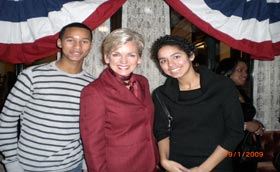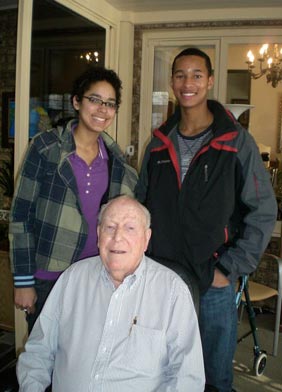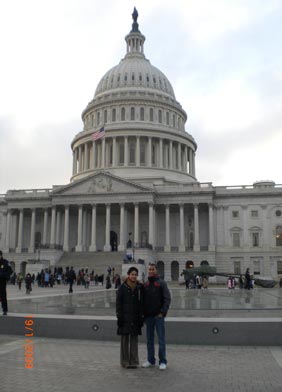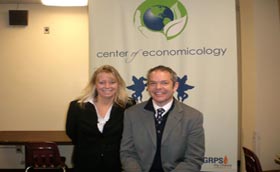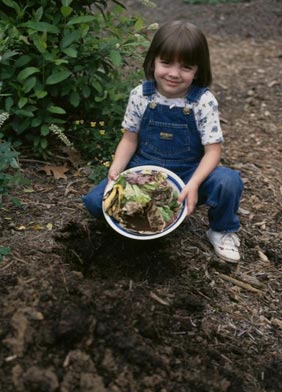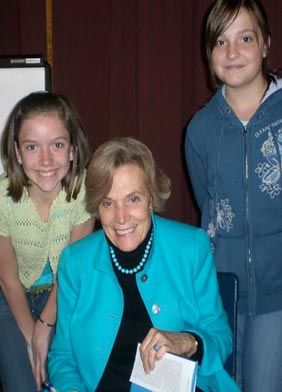
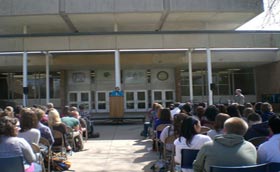 You cannot save what you do not know and love. Aldo Leopold, American ecologist
You cannot save what you do not know and love. Aldo Leopold, American ecologist
The week of Earth Day April 2010 was celebrated at Grand Rapids Public Schools’ City High/Middle School when Dr. Sylvia Earle, an internationally famous oceanographer, spent a morning there. Dr. Earle held students spellbound as she called on them to save the ocean (she uses the singular because they’re all connected) before it’s too late.
Dr. Earle was named by Time Magazine as its first “Hero For the Planet”; the New York Times dubbed Earle “Her Deepness” for the 7,000 hours she’s spent underwater studying ocean life. The Library of Congress called her a “Living Legend.”
But the sixth-graders at The Center for Economicology were just as impressed that she suggested to Google founder John Hanke how he should improve Google EARTH. And Hanke listened! Dr. Earle told Hanke that since most of the Earth is ocean, he needed to create a Google Ocean. And now he has.
“How does the ocean affect us?” one sixth-grader in the Economicology class asked. “A lot,” the warm and friendly Earle answered. Every drop of water on earth is connected to the ocean. Twenty percent of the oxygen humans need for every breath comes from the ocean. “We are all part of one system,” Dr. Sylvia told them.
Having spent the equivalent of four years in work weeks under the ocean, Dr. Earle told the students to “go buy a swimming mask so you can see what’s underwater.” Dr. Earle’s message to these young people is that once they look at sea life and know what richness swims there, they will want to take care of the ocean.
Answering students’ questions, Dr. Earle told them:
- No two fish faces look alike
- 90% of tuna are gone and tuna can’t be farm raised
- Stop eating tuna in any form to prevent its extinction
- Grouper is endangered because it tastes good
- Half the ocean’s coral reefs are gone or are degrading
- Whales and some fish can be 200 years old
- 800 feet underwater divers first see sparks of light
- 1,000 feet down the sea life sparkles like July 4th
After Dr. Earle’s visit, a City High senior girl told her teacher she had just decided what she wants to study in college. The ocean!
(Above photo – Pictured here with members of City High’s Eco Club, Dr. Sylvia Earle delivered a strong warning to all the students. If we are to preserve the ocean all life depends on, people must act now. “The next ten years are the most important in the next 10,000 years,” she told the students. ‘What we do or don’t do to bring our oceans back to life will determine our future.”)

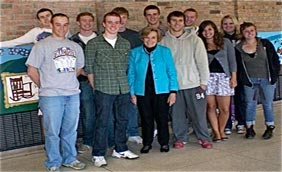
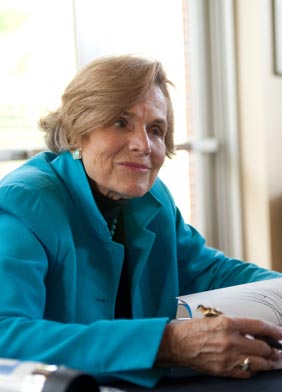 Dr. Sylvia Earle, a global authority on the ocean and Explorer-in-Residence at the National Geographic Society, both entertained and warned a packed audience at Aquinas College during the week of Earth Day April 2010. Dr. Earle delivered the 14th annual Wege Foundation Lecture titled, “Without Blue There Is No Green.” In other words, if we don’t start protecting the ocean and its sea life, we face losing the ‘green’ Earth” as well.
Dr. Sylvia Earle, a global authority on the ocean and Explorer-in-Residence at the National Geographic Society, both entertained and warned a packed audience at Aquinas College during the week of Earth Day April 2010. Dr. Earle delivered the 14th annual Wege Foundation Lecture titled, “Without Blue There Is No Green.” In other words, if we don’t start protecting the ocean and its sea life, we face losing the ‘green’ Earth” as well.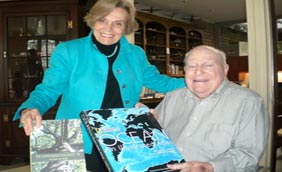
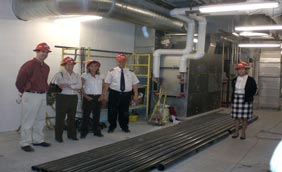

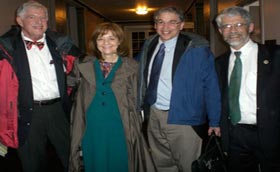
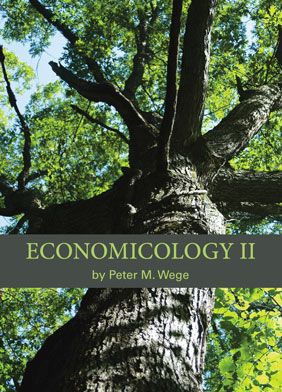

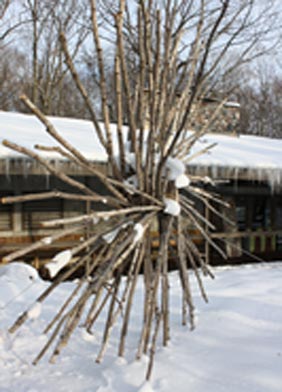
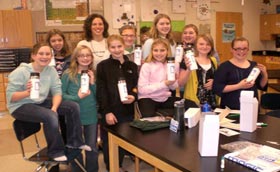
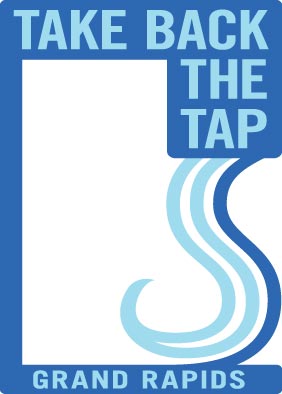 Peter M. Wege has forever said that if this planet is to be saved, “The kids must do it.” He’s counting on the children pictured here at Ada Christian School in Grand Rapids to help promote the Take Back The Tap campaign The Wege Foundation has launched to end the sale of bottled water. These middle-schoolers saw photos where a colony of plastic bottles covers the ocean floor off the California coast.
Peter M. Wege has forever said that if this planet is to be saved, “The kids must do it.” He’s counting on the children pictured here at Ada Christian School in Grand Rapids to help promote the Take Back The Tap campaign The Wege Foundation has launched to end the sale of bottled water. These middle-schoolers saw photos where a colony of plastic bottles covers the ocean floor off the California coast.